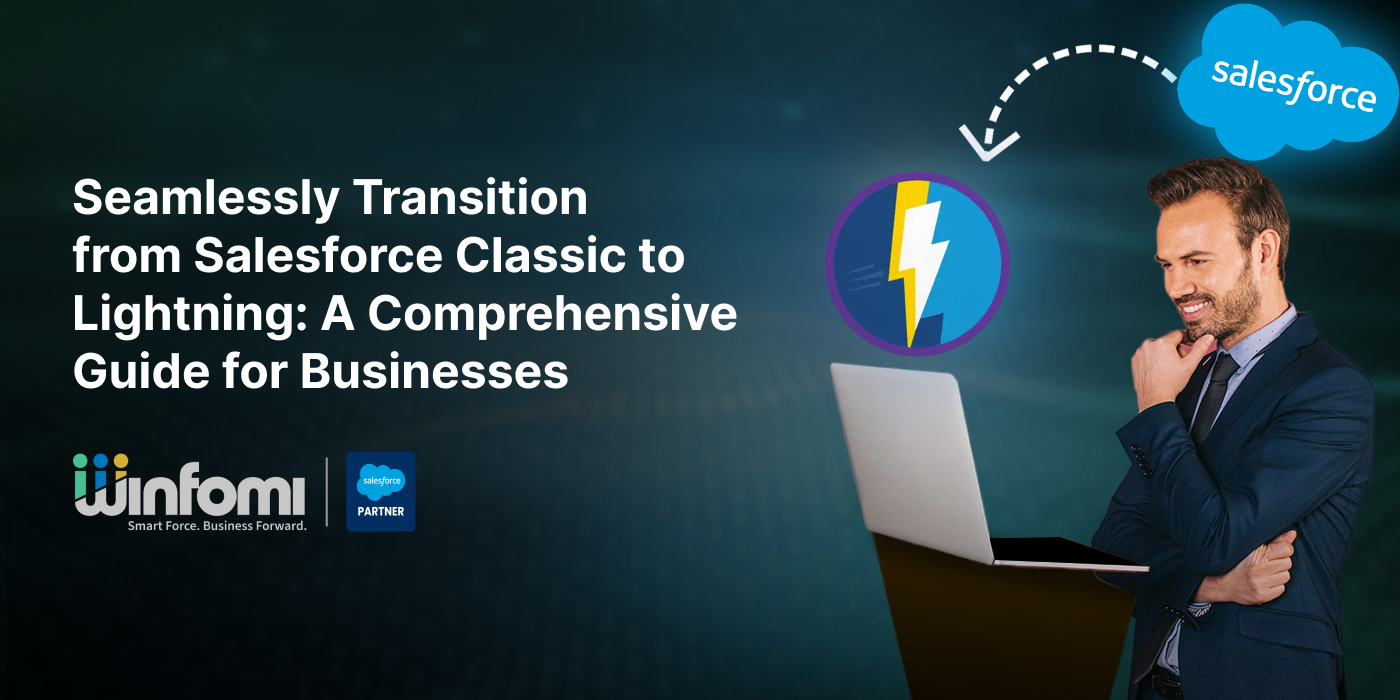

Seamlessly Transition from Salesforce Classic to Lightning: A Comprehensive Guide for Businesses
As businesses evolve, so do the tools and platforms they rely on. Salesforce, a leading customer relationship management (CRM) platform, has significantly advanced with the introduction of Salesforce Lightning. If your organization is still using Salesforce Classic, it’s time to consider upgrading to Lightning for enhanced performance, improved user experience, and access to new features that can transform your business operations.
This guide will walk you through the critical steps to ensure a successful Salesforce Classic to Lightning migration, focusing on key strategies that reduce disruptions, increase user adoption, and ultimately, boost your return on investment (ROI).
Understanding the Need for Salesforce Migration
The shift from Salesforce Classic to Lightning is more than just a cosmetic upgrade; it’s a strategic move that can enhance your organization’s efficiency and effectiveness. Salesforce Lightning offers a modern interface, advanced features like AI-driven analytics with Einstein, and improved customization options. But the question remains: why should you make the move now?
- Access to New Features: Salesforce Lightning users have exclusive access to the latest updates and innovations that Salesforce rolls out three times a year. By staying on Classic, you miss out on these enhancements.
- Increased Productivity: According to the 2017 Lightning Adoption Survey, organizations that switched to Lightning reported a 41% increase in productivity and a 21% increase in win rates.
- Enhanced User Experience: The Lightning Experience is designed to be intuitive and user-friendly, reducing the learning curve and encouraging adoption across your team.
Migrating to Salesforce Lightning not only aligns your organization with the latest technology but also positions you for future growth and success.
Step 1: Securing Buy-In from Stakeholders
Before initiating the migration process, it’s essential to secure buy-in from both management and daily users. The transition to Salesforce Lightning involves changes in workflows and processes, which can be met with resistance if not properly managed.
- Tailor Your Approach: Customize your messaging to highlight the benefits relevant to each group. For management, emphasize the ROI and long-term benefits. For users, focus on how the new features will simplify their daily tasks and improve their efficiency.
- Demonstrate Value: Use case studies or data from similar organizations that have successfully transitioned to illustrate the potential benefits.
Step 2: Conducting a Salesforce Lightning Experience Readiness Check
The Salesforce Lightning Experience Readiness Check is a crucial step in the migration process. This tool evaluates your current Salesforce Classic environment and identifies potential challenges, such as features that may not be supported in Lightning or customizations that need adjustments.
- How to Run the Check: Log in to Salesforce, navigate to the Setup page, and search for “Lightning Experience Readiness Check.” The report generated will provide insights into areas that require attention before migrating.
- Gap Analysis: Use the results of the Readiness Check to perform a gap analysis. Identify the features and functionalities that need to be addressed or reconfigured for the Lightning Experience.
Step 3: Utilizing the Salesforce Optimizer Report
Before you make the switch, it’s essential to streamline your Salesforce environment. The Salesforce Optimizer Report helps you identify areas that can be improved, simplified, or eliminated before migrating.
- Streamlining Your Org: Use the Optimizer Report to clean up unused custom profiles, deactivate outdated workflow rules, and ensure your AppExchange apps are Lightning-ready.
- Simplifying Processes: By addressing these areas before migration, you reduce the risk of issues during the transition and ensure a smoother process.
Step 4: Leveraging the Lightning Migration Assistant
The Lightning Migration Assistant allows you to take Salesforce Lightning for a test run without fully committing. This tool guides you through the initial setup and provides a preview of how your organization will operate in Lightning.
- Test Run: Use this opportunity to explore features, test customizations, and identify any additional support your team might need.
- Gap Analysis: Iterative Approach: Gradually roll out the migration, starting with smaller groups to minimize disruptions and refine the process as you go.
Step 5: Setting Clear ROI Goals and KPIs
To measure the success of your Salesforce Classic to Lightning migration, it’s vital to establish clear ROI goals and key performance indicators (KPIs).
- Benchmarking: Measure current processes and performance metrics to set a baseline. Post-migration, compare these metrics to evaluate the impact of the transition.
- Surveys and Feedback: Use the Collect feedback from users to identify areas of improvement and ensure the new system meets their needs.
Step 6: Implementing a Phased Migration Approach
For larger organizations, a phased approach to migration is often the best strategy. This method allows you to segment the migration process, reducing the risk of widespread issues and giving your team time to adapt.
- Segmenting the Rollout: Start with departments or teams that are more likely to benefit from the new features. Use the learnings from these initial migrations to refine your strategy for the rest of the organization.
- Continuous Improvement: Adjust your migration plan based on feedback and performance metrics to ensure a smooth transition for all users.
Step 7: Focusing on User Adoption and Change Management
A successful Salesforce migration isn’t just about the technology—it’s also about the people. Ensuring that your team is comfortable and confident with the new system is crucial for long-term success.
- Training and Support: Provide comprehensive training sessions and resources to help users get accustomed to Salesforce Lightning. Consider appointing a team of champions who can offer on-the-ground support and feedback.
- Communication: Keep the lines of communication open. Regularly update your team on the progress of the migration and be transparent about any challenges or delays.
Step 8: Avoiding Common Transition Challenges
Transitioning to Salesforce Lightning can come with its challenges, but with the right approach, these can be minimized.
- Preparedness: Ensure your team is well-prepared with the necessary training and resources to avoid resistance and frustration.
- Utilize Tools: Leverage tools like Panaya ForeSight to assess complexity, analyze code dependencies, and streamline adoption.
Continuous Improvement and Next Steps
Migrating from Salesforce Classic to Lightning is a significant step that can bring numerous benefits to your organization. By following these steps, you can ensure a smooth transition, maximize user adoption, and achieve a higher return on investment.
Ready to make the switch? Salesforce Classic to Lightning Migration can transform your business. For a seamless and successful transition, trust Winfomi’s expert team to guide you through the process. Learn more about how we can help with your Salesforce Migration and book your free consultation today.






